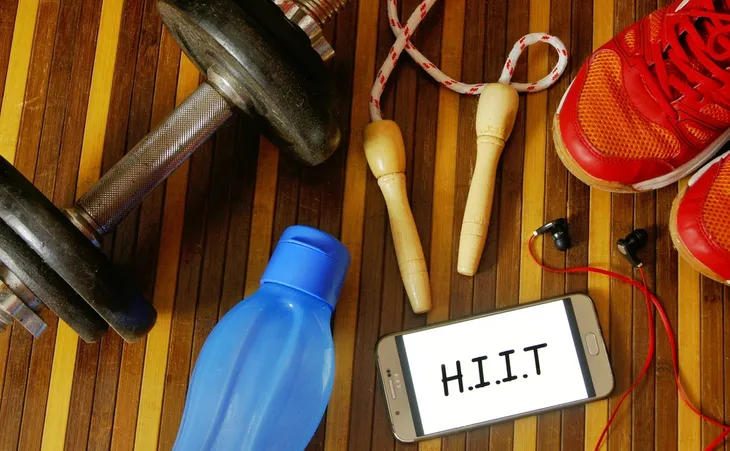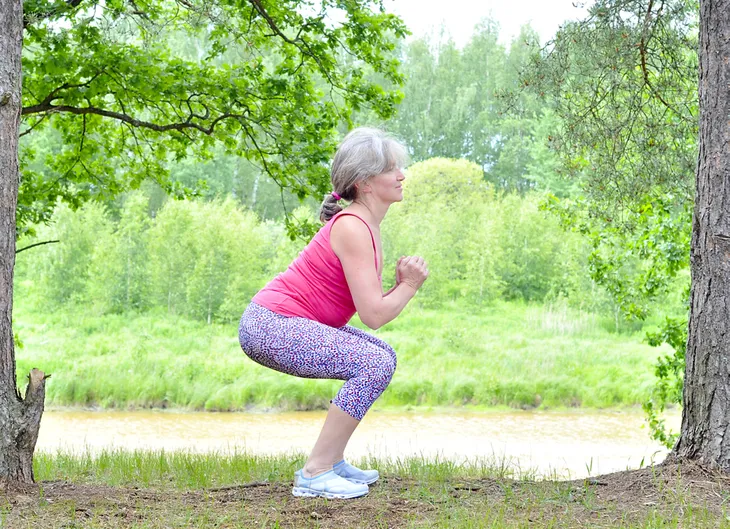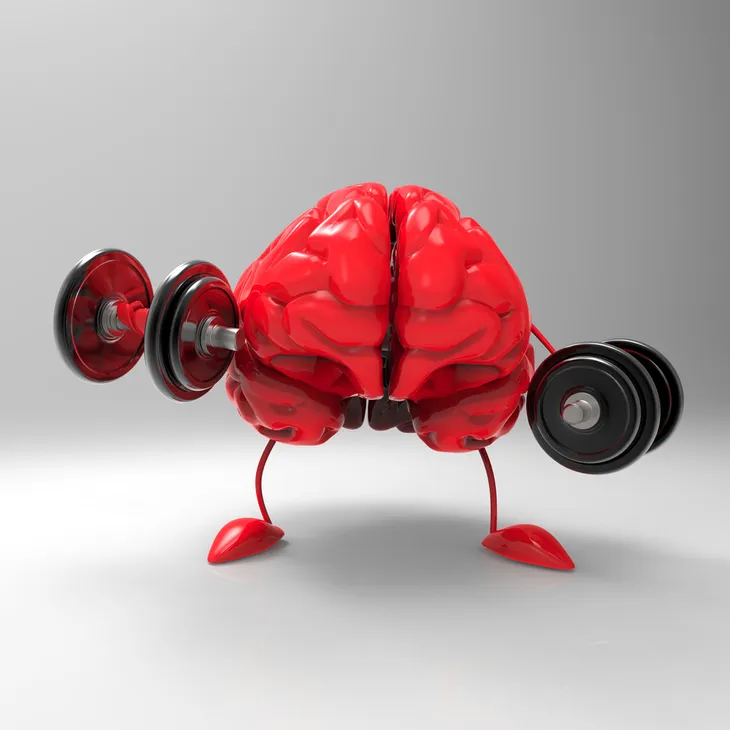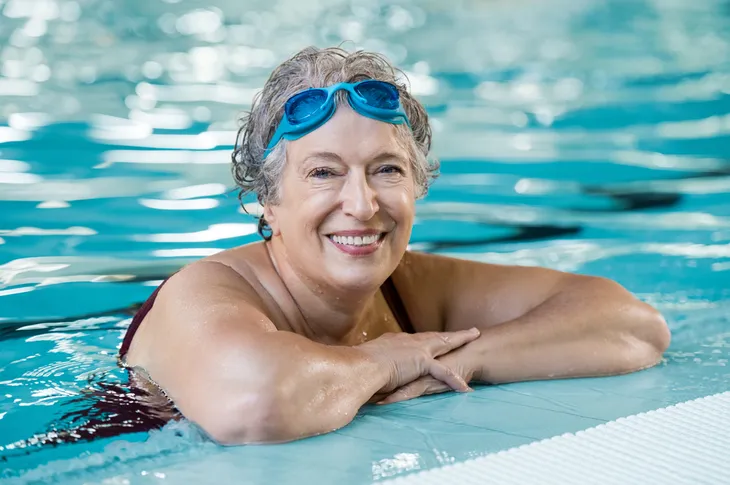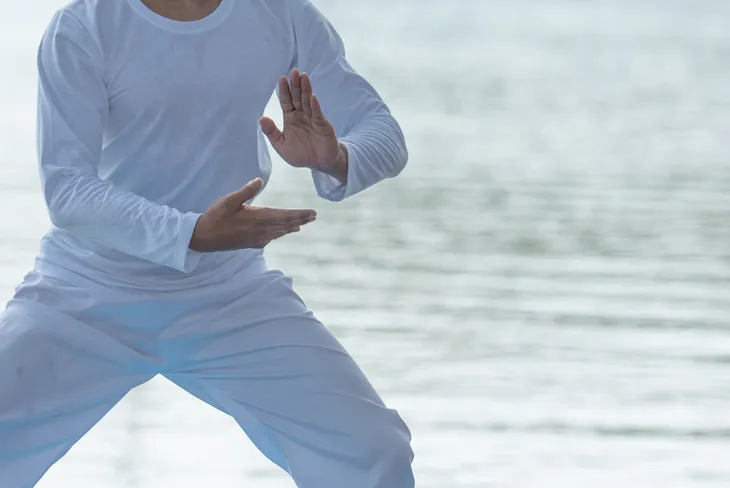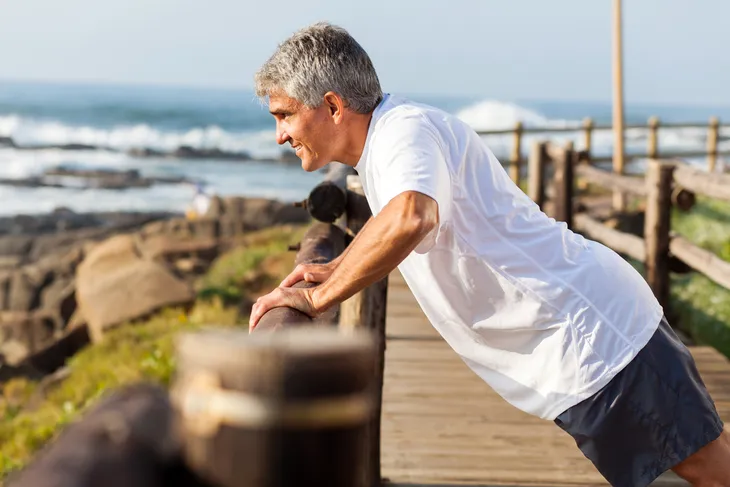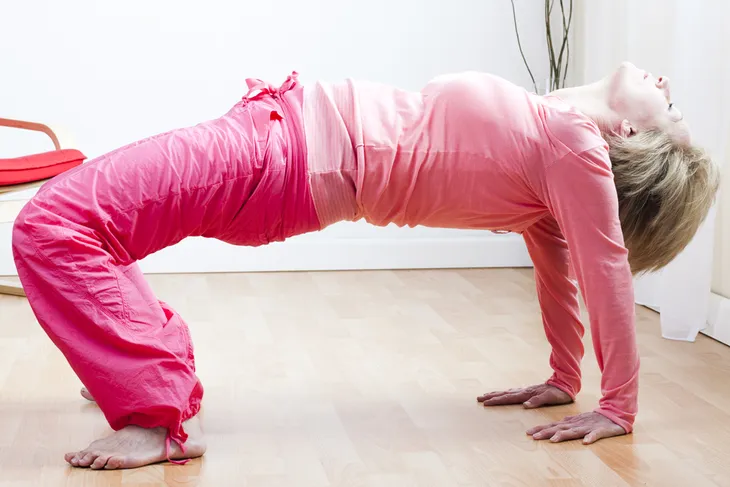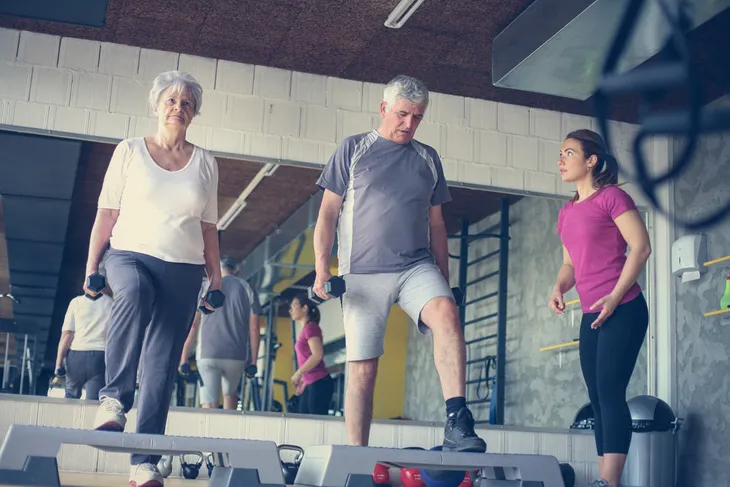In a perfect world, we could all just dip ourselves in the fountain of youth, and we’d take 20-years off our age. However, we definitely don’t live in a perfect world, so there’s some work involved if you want to slow down the aging process – in this case, at the cellular level.
The New York Times explains there are exercises that are appropriate for “aging muscles,” noting that older cells don’t regenerate as quickly as young ones, and their mitochondria – which produces their energy – starts to drop off in advanced years. There’s some evidence, however, that “certain sorts of workouts may undo some of what the years can do to our mitochondria,” especially if it’s intense exercise, notes the source. So let’s take a look at 15 exercises from a variety of sources purported to slow down aging…
Want senior content delivered straight to your inbox? Sign up for our exclusive email list and receive articles and news on diet & nutrition, fitness, and mental health dedicated specifically to our senior audience!
Weight Training
KindredHealthcare.com says you can add some weight to your workouts, as long as your physician approves. Whether you use your own body weight for resistance or try free weights, you can work up a good burn in your muscles, it adds.
The source says the benefits of weight lifting include fighting fat, reducing the effects of osteoporosis (brittle bones), lowering diabetes risk, improving balance, and preventing back pain, all associated with advancing years.
High Intensity Interval Training
This is the type of exercise that is actually highlighted in the study cited by the New York Times that we mentioned earlier. Health.com cites the same study, noting high intensity interval training (HIIT) “has been the buzzy sweat method for a while now.”
HIIT is a fast-paced workout that alternates “short burst of exercise” with quick recovery periods. The study had groups participating in 12-week HIIT cycling, strength training (with weights), and a combination of weights and cycling – those who completed the HIIT cycling “got the biggest benefit at the cellular level.” In fact, “older folks” in the study saw a 69-percent increase in mitochondrial capacity, it adds.
Proper Squats
Prevention says bending at the knees can slow down aging, but many elderly folks avoid it because they think their knees can’t handle the strain. But it’s about the technique, it adds.
“You squat all the time, so it’s essential that you learn to do it properly,” it explains. Women should turn their toes out slightly when squatting, and men should keep their toes pointed forward due to differences in hip structure, it explains. (For more information, here are some Best and Worst Tips to Perfect Your Squat).
Walking
This one shouldn’t be too difficult for anyone without mobility issues, and has physical benefits – but EverydayHealth.com focuses on the mental benefits for the elderly when talking about this particular exercise.
The source says a study shows walking 72-blocks per week halts brain shrinkage and lowers the risk of cognitive decline and dementia by 50-percent!
Try Yoga
This may appear to be a low-impact exercise, but if you’ve ever tried an intermediate yoga class, you’ll know it’s actually pretty strenuous and requires learning breathing techniques. “Yogic breathing has been shown to oxygenate the cells, ridding them of toxins, helping prevent illness, and making skin radiant,” explains FitnessMagazine.com.
The source goes on to say that yoga poses are designed “to work the inside of your body as well as the outside,” which could help with digestive issues and even the immune system, it adds.
Brain Gym
Anti-aging is more than about looking more radiant and toned. It’s about keeping your mind and wit sharp, and you can use a different kind of gym to achieve those kinds of results. (Learn more in our article on Brain Boosting Benefits of 30-minutes of Exercise).
Agein.com explains that Brain Gym is “a series of cognitive learning exercises that are great for all ages.” But it’s more than just concentration and memory exercises; there are movements involved in Brain Gym that a 90-year-old can do, it adds. “The integrative movements effectively develop new brain cells, while building healthy neural networks. This can help prevent or slow down neuro-degeneration diseases such as Alzheimer’s,” it explains.
Swimming
Everyone likes a good soak, and getting into the pool reduces the weight on your joints and makes getting a workout easier – especially if you have arthritis.
In fact, Everyday Health says a Canadian study shows that for patients with osteoarthritis of the hip, swimming reduces the risk of falling and breaking a bone. “Swimming also has other anti-aging benefits such as easing arthritis pain and boosting mobility,” it adds.
Tai Chi
This traditional Chinese martial art can take years off your age at a cellular level, according to a National Post article from 2014. It points to a study that followed three groups of participants under 25-years old who participated in Tai Chi (compared to brisk walking or nothing at all).
The source says researchers found the biggest benefit in the Tai Chi group relating to “a stem cell important to a number of the body’s functions and structures.” Tai Chi has also been confirmed to benefit patients with moderate Parkinson’s disease and fibromyalgia, it adds.
Push-Ups
This simple exercise is listed among the 5-anti aging moves outlined by Shape to keep women “fit and injury-free for life.” Don’t cheat now – get into a straight plank position with your wrists below your shoulders, with fingers turned slightly inwards.
Bend your elbows and lower your body until you’re “hovering above the ground,” and maintain your plank position and you press back up into a straight-armed position, it adds. Doing 10-reps should be sufficient (and remember to breathe).
‘Cross’ Training
Okay, we’ve done a clever play on words here. What we mean is that incorporating moves into your exercises that involve crossing your arms or legs over the midline of your body can be beneficial for anti-aging.
Why? According to Prevention, this type of movement “makes your two brains talk to each other,” meaning it improves the connection between the left and right hemispheres of your brain, which lessens as you age. This can help protect against cognitive decline (and possibly help maintain your range of motion).
Tibetan Rites
CoreSpirit.com says the Tibetans have been doing a set of exercises known as the “Five Tibetan Rites” (also known as Fountain of Youth) since ancient times to stay young and healthy.
These five exercises involve simple movements and poses, and can be performed by those who are 80-and older to improve balance and to stay limber. Adding a foam body roller to the routine can help stretch out muscles and tendons for added benefit, it notes.
Just Get Moving
Okay, so you can hit the gym for a proper workout (and possibly the help of a personal trainer), but Best Health explains a study out of McMaster University in Ontario shows that activity that helps you break a sweat regularly can take years off your appearance.
Apparently the key is the production of myokines, proteins produced by muscle cells and carried throughout the body, which improve complexion. The source says the study found women over 65 who exercise for a minimum of 2-hours per week for 3-months “had the skin composition of women 20 to 30-years younger.”
Jogging
This is walking’s slightly faster cousin, but it can help slow down some of the effects of aging, according to Business Insider. More specifically, jogging (and other aerobic exercises) can help reverse “some heart damage from normal aging,” it adds.
Aging can take its toll on the heart, causing it to stiffen – the left chamber of the heart (that supplies the body with richly oxygenated blood) is at particularly high risk, it adds. A study it cites divided participants into two groups – one of them did two years of supervised exercise up to five days a week, while the other did balance exercises and yoga. The “higher intensity exercisers” had significant improvement in heart function by the study’s end, it noted.
Eccentric Exercise
No, this doesn’t mean you have to act silly when you’re working out – it relates to strength training. Men’s Journal explains while pretty much any strength-training exercises will do, how you do those exercises might determine their anti-aging effectiveness.
It notes when you’re doing your weight training, to focus on concentric movements (short, contracting) for the first two sets, and then switch to eccentric (lengthening, releasing) for the next two sets. The eccentric phase may help improve strength more due to more microtears in muscle fiber, it adds. Also be sure to switch up your routine weekly to keep “your muscles guessing.”
Balance Training
Huffington Post says you should focus on balance when you’re advancing in age, as falling “can lead to broken bones or head trauma.” It suggests a couple of exercises for improving your balance through movement, ensuring you’ve cleared an adequate space for yourself to do them and have had your fitness level assessed.
One suggestion is the “single-leg balance and reach,” which involves keeping your upper body steady while reaching to the side and to the back with one leg, but you can also make it a bit easier by shifting your weight from one leg to the other and then building up to balancing on one leg.


